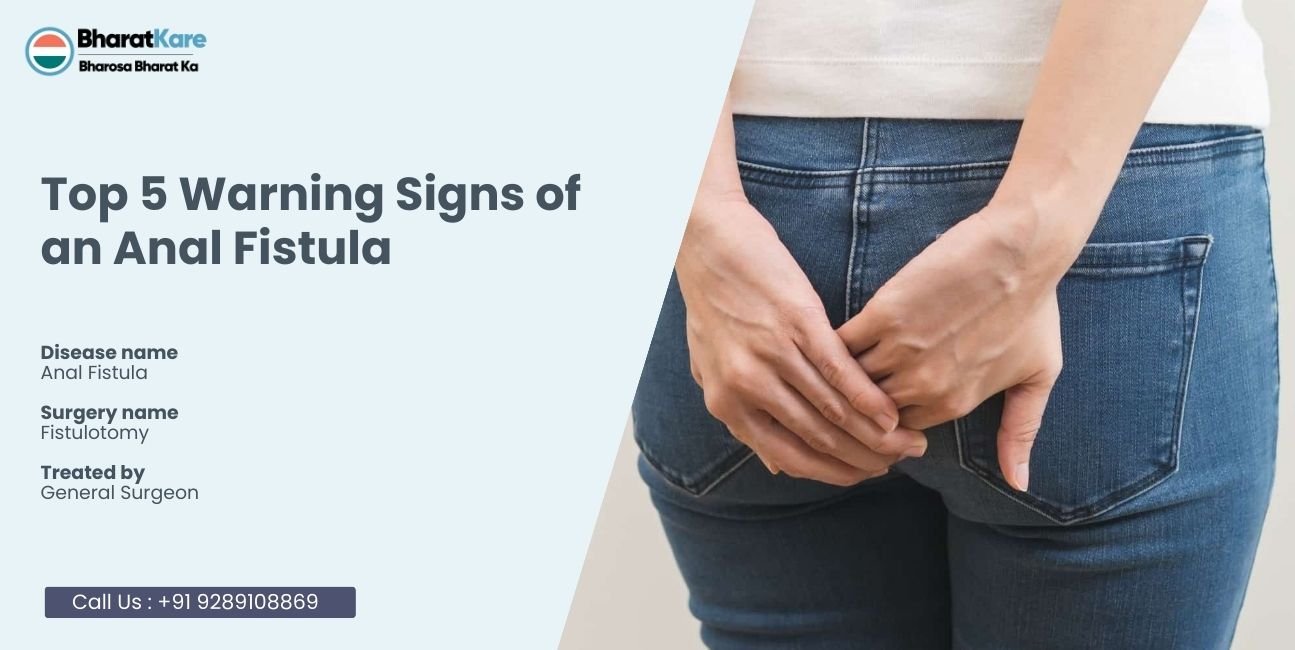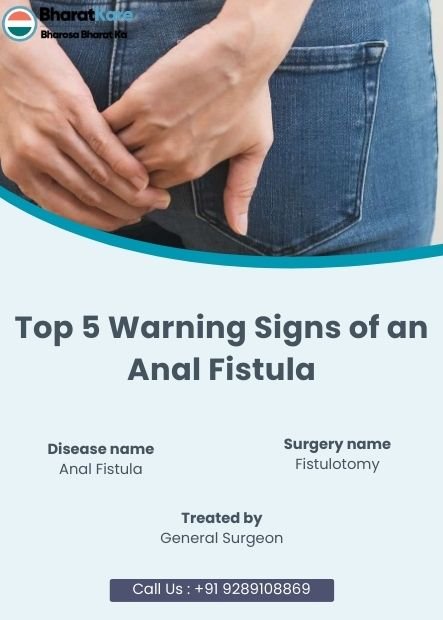Top 5 Warning Signs of an Anal Fistula
Last Tuesday, Maria walked into my office looking absolutely miserable. She’d been dealing with some embarrassing symptoms for eight months – yes, eight whole months – before finally working up the courage to see me. “Doc, I kept thinking it would just go away,” she said, fidgeting in her chair. “But I can’t take this anymore.”
Here’s the thing that breaks my heart: Maria’s story isn’t unique. I see this exact scenario play out in my office almost weekly. People suffering with the top 5 warning signs of an anal fistula, too embarrassed or scared to get help, hoping against hope that whatever’s happening down there will magically disappear.
Spoiler alert: it won’t.
Look, I get it. Nobody wants to talk about their rear end. But after treating hundreds of patients with anal fistula symptoms over the years, I’ve learned something important – the sooner you recognize what’s happening and get help, the easier everything becomes. That’s why I’m sharing this with you today.


Let’s Talk About What An Anal Fistula Actually Is
Before we dive into the top 5 warning signs of an anal fistula, let me paint you a picture. Imagine your body decides to create its own little tunnel where there shouldn’t be one. That’s essentially what an anal fistula is – an abnormal connection between the inside of your anal canal and the skin around your anus.
Sounds gross? Yeah, it kind of is. But it’s also surprisingly common, and here’s what I tell every single patient: this isn’t your fault, you didn’t cause it, and most importantly, we can fix it.
The tricky part is that many people don’t realize what they’re dealing with. They notice some weird symptoms, maybe Google them (big mistake – Dr. Google is terrible at diagnosing), get scared, and then… nothing. They just suffer in silence.
That stops today. We’re going to walk through the top 5 warning signs of an anal fistula together, and I’m going to tell you exactly what to look for and when to worry.
Warning Sign 1: That Annoying Discharge That Never Stops
Okay, let’s start with the big one – the symptom that eventually drives most people to my office. If you’ve got some kind of discharge coming from around your anal area that just won’t quit, we need to have a serious conversation.
This isn’t the kind of thing you can ignore or blame on your underwear choice. I’m talking about persistent, ongoing discharge that might be thick, thin, smelly, or bloody. Patients describe it differently – some say it’s like having a constantly runny nose, but in the worst possible place.
Jennifer, one of my patients, put it this way: “I felt like I was always dirty, no matter how much I showered or changed clothes.” She was going through multiple pairs of underwear daily and had started carrying wet wipes everywhere. Sound familiar?
This anal fistula discharge happens because that tunnel I mentioned is basically a highway for infected material to escape. Your body is trying to clear out the infection, but because there’s this permanent opening, it never fully heals. It’s like trying to fill a bucket with a hole in the bottom.
The discharge often comes and goes, which tricks people into thinking they’re getting better. “Maybe it was just a weird infection,” they think. Then it comes back. This on-off pattern is actually one of the classic fistula symptoms that separates it from other conditions.
Here’s what really gets me – people often blame themselves for “not being clean enough.” Let me be crystal clear: this has nothing to do with your hygiene. You could shower ten times a day, and it wouldn’t stop the discharge. That’s because the source is internal, not external.
If you’ve been dealing with persistent discharge for more than a week or two, especially if it keeps coming back, you’re looking at one of the most important top 5 warning signs of an anal fistula. Don’t wait for it to “get better on its own.”
Don’t ignore the discomfort—consult a Top 5 Warning Signs of an Anal Fistula. Book your appointment today!
Warning Sign 2: Pain That Doesn’t Make Sense
Now, anal fistula pain is weird. It’s not like stubbing your toe – sharp, obvious, and then gone. This pain is sneaky. It’s more like having a deep ache that you can’t quite pinpoint, but it’s always there, nagging at you.
My patient Robert described it perfectly: “It felt like someone was pressing on a bruise that I couldn’t see.” He’d been dealing with this discomfort for months, thinking he’d pulled something at the gym. The pain would get worse when he sat for long periods (he was a truck driver), and especially during bowel movements.
What’s interesting about this particular fistula symptom is that it might actually feel better when the discharge is flowing freely. Weird, right? That’s because when the infected material can drain out easily, there’s less pressure building up inside. But don’t let temporary relief fool you – the underlying problem is still there.
I’ve had patients tell me they thought they were just getting old, or that their desk chair was uncomfortable, or that they needed more fiber in their diet. Meanwhile, they’re dealing with one of the key top 5 warning signs of an anal fistula and don’t realize it.
The pain can also be unpredictable. Sometimes it’s a dull ache, other times it might spike into something more intense, especially if the fistula gets blocked temporarily. When that happens, the pressure builds up, and let me tell you, that’s when people really pay attention.
Lisa, another patient, said she thought she had hemorrhoids for the longest time. “But hemorrhoid pain comes and goes with bowel movements,” she told me. “This was just… always there.” That constant, nagging quality is what sets anal fistula pain apart from other conditions.
If you’ve got unexplained pain or discomfort in your anal area that’s been hanging around for weeks, don’t brush it off. It’s trying to tell you something.
Warning Sign 3: Lumps, Bumps, and Swelling That Won’t Go Away
Finding any kind of lump “down there” is terrifying. I get it. But here’s the thing about anal fistula-related swelling – it’s usually tender, persistent, and has this annoying habit of not responding to typical treatments.
The swelling happens because your body is fighting an ongoing infection. Think of it like your immune system working overtime, which leads to inflammation and puffiness around the anal opening. You might feel a soft, squishy area, or sometimes a firmer lump.
Here’s where it gets tricky – the external opening of the fistula can look like a small pimple or bump. I can’t tell you how many patients have tried treating it with acne medication, antibiotic ointment, or just hoped it would pop and disappear.
Karen spent three months putting various creams on what she thought was “just a weird pimple.” When she finally came to see me, she said, “I tried everything from the pharmacy, but it just kept coming back.” That persistence is the key – normal bumps and pimples heal and disappear. Anal fistula openings don’t.
The swelling might be more noticeable at certain times. Maybe it’s worse after you’ve been sitting for a while, or after a bowel movement. Some patients notice it’s more prominent when they’re constipated or straining.
What really concerns me is when people assume the worst. “I was convinced it was cancer,” one patient told me. While it’s always smart to get lumps checked out, most anal swelling related to fistulas is from infection and inflammation, not something more serious.
If you’ve noticed any persistent swelling, lumps, or bumps around your anal area that have been there for more than a couple weeks, don’t ignore it. It’s definitely one of the top 5 warning signs of an anal fistula that deserves attention.
Warning Sign 4: Blood Where Blood Shouldn’t Be
Seeing blood in your underwear or on toilet paper is never fun. With anal fistulas, the bleeding usually isn’t dramatic – it’s more like spots or streaks that show up at random times, not just during bowel movements.
This is different from hemorrhoid bleeding, which typically happens when you’re straining or having a bowel movement and then stops. Anal fistula bleeding can occur anytime because it’s coming from that infected tunnel, not from surface irritation.
My patient Dave noticed blood staining his underwear and immediately panicked. “I thought I had colon cancer,” he told me. After examination, we discovered he had been dealing with several fistula symptoms for months, including this anal bleeding, but hadn’t connected the dots.
Sometimes the blood mixes with discharge, which can look particularly concerning. Patients often describe seeing pinkish or reddish drainage that worried them. The key thing to understand is that while any bleeding should be checked out, fistula-related bleeding is usually manageable once the underlying condition is treated.
What I find interesting is the pattern. Unlike other causes of anal bleeding that come and go with specific activities, fistula bleeding tends to be more persistent and unpredictable. You might notice it when you’re just going about your day, not necessarily related to bathroom activities.
Sarah mentioned that she’d see blood on her underwear even on days when she hadn’t had a bowel movement. “That’s when I knew something was really wrong,” she said. That unpredictable nature is actually a helpful diagnostic clue.
If you’re seeing recurring blood around your anal area, especially if it’s happening at random times and not just during bowel movements, you’re dealing with one of the top 5 warning signs of an anal fistula that needs professional evaluation.
Warning Sign 5: Feeling Crummy for No Good Reason
This last symptom is the one that people almost never connect to their other issues, but it’s actually really important. When you have an ongoing infection – even a relatively localized one like an anal fistula – your whole body feels it.
You know that feeling when you’re fighting off a cold? Not quite sick, but definitely not right? That’s what many patients with anal fistulas describe. Low-grade fever that comes and goes, feeling more tired than usual, just generally feeling “off” without being able to put your finger on why.
Tom, a construction worker I treated, kept thinking he was just getting older. “I figured turning 45 meant feeling tired all the time,” he said. But after we treated his anal fistula, he was amazed at how much better he felt overall. He hadn’t realized that chronic infection was draining his energy.
The fever usually isn’t high – maybe just a degree or two above normal – but it’s persistent. Your immune system is working overtime to fight the infection, and that takes energy. That’s why you might feel rundown even when nothing else seems obviously wrong.
What’s particularly frustrating for patients is that this fatigue and general malaise often gets blamed on stress, work, family life, or just “getting older.” Meanwhile, they’re dealing with one of the top 5 warning signs of an anal fistula that’s actually treatable.
I always tell patients: if you’re feeling generally unwell and also experiencing any other symptoms we’ve talked about, don’t assume they’re unrelated. Your body is pretty smart about letting you know when something needs attention.
Don’t ignore the discomfort—consult a Top 5 Warning Signs of an Anal Fistula. Book your appointment today!
So What Actually Causes These Things?
Now that we’ve covered the top 5 warning signs of an anal fistula, you’re probably wondering how the heck this happens in the first place. The honest answer? Sometimes we don’t know.
Most anal fistulas start with an anal abscess – basically, a pocket of infection that forms near your anus. Your anal canal has small glands that can get blocked or infected, kind of like a pimple forming in the worst possible place. When bacteria multiply and create an abscess, your body tries to fight it off.
Here’s where it gets complicated: sometimes the infected material needs an escape route. That’s when your body creates its own drainage tunnel – the fistula. It’s actually trying to help by giving the infection somewhere to go, but unfortunately, this “solution” becomes a permanent problem.
Certain things can increase your risk. Crohn’s disease is a big one because it causes ongoing inflammation throughout your digestive tract. Previous anal surgery, certain infections, and even prolonged diarrhea can sometimes contribute.
But here’s what I want you to understand: most of the time, anal fistulas just happen. You didn’t do anything wrong, you couldn’t have prevented it, and you shouldn’t blame yourself. It’s just one of those medical curveballs that life throws at you sometimes.
The important thing is recognizing the top 5 warning signs of an anal fistula and getting help when you need it.
When to Stop Waiting and Start Acting
I know we’ve covered some uncomfortable territory here. Maybe you’re reading this and thinking, “Oh crap, that sounds like me.” Or maybe you’re still hoping your symptoms will just disappear if you ignore them long enough.
Let me save you some time: they won’t.
If you’re dealing with any combination of the symptoms we’ve discussed – especially that persistent discharge or ongoing pain – it’s time to have a conversation with a healthcare professional. I know it feels awkward. Trust me, I’ve had thousands of these conversations, and I understand the embarrassment.
But here’s the thing: medical professionals deal with this stuff all the time. We’re not going to judge you, we’re not going to be grossed out, and we’re certainly not going to think less of you. We went to medical school specifically to help people with exactly these kinds of problems.
If you’ve got a fever along with any of the other top 5 warning signs of an anal fistula, don’t wait. Fever can mean the infection is getting more serious, and earlier treatment is always easier than waiting until things get complicated.
I had a patient who waited two years before coming to see me. Two years! When I asked why, he said, “I kept thinking it would get better on its own.” By the time he came in, what could have been a relatively simple treatment had become much more complex.
Don’t be that guy. Your future self will thank you for dealing with this sooner rather than later.
What to Expect When You Finally Get Help
The good news – and there is good news – is that anal fistulas are totally treatable. We’re not talking about some mysterious condition that doctors scratch their heads about. This is bread-and-butter stuff for surgeons who specialize in this area.
Yes, surgery is usually needed. I know that sounds scary, but modern techniques have come a long way. We’re not talking about the horror stories your great-uncle might have told you about medical procedures from 1975. Today’s treatments are much more precise and much less disruptive to your life.
Before any treatment, your doctor will need to examine the area and possibly do some imaging to understand exactly what’s going on. I know that might sound mortifying, but remember – we’ve seen it all before, and our only goal is getting you feeling better.
Recovery time varies depending on your specific situation, but most people are amazed at how much better they feel once the fistula is properly treated. No more constant discharge, no more nagging pain, no more feeling generally unwell. It’s like getting your life back.
The key is working with someone who has experience with these conditions and can guide you through the process. Don’t just go to any general surgeon – find someone who specifically deals with colorectal issues and understands the nuances of anal fistula treatment.
Getting the Right Help in Ahmedabad
If you’re in Ahmedabad and recognizing the top 5 warning signs of an anal fistula in yourself, you’ll want to find someone with real experience in treating these conditions. Dr. Ankur K. Patel at Bharatkare has been dealing with anal fistulas and similar problems for 16 years.
What I like about Dr. Patel’s approach is that he gets the whole patient experience – not just the medical side, but the emotional side too. He understands that walking into a doctor’s office to discuss anal problems takes courage, and he works to make the process as comfortable as possible.
His credentials are solid – MBBS, MS in General Surgery, plus fellowships in laparoscopic surgery. That means he’s specifically trained in the most current, least invasive treatment approaches available. When you’re dealing with something as personal as anal fistula symptoms, you want someone who really knows what they’re doing.
The Bharatkare facility has been helping people in Ahmedabad deal with these conditions for years. They understand that coming in for treatment is a big step, and they work hard to make the experience as straightforward and comfortable as possible.
Managing Things While You’re Getting Help
While you’re arranging to see someone about the top 5 warning signs of an anal fistula you might be experiencing, there are some things you can do to stay more comfortable.
First, gentle hygiene is your friend. Clean the area carefully after bowel movements, pat (don’t rub) everything dry, and wear clean, breathable underwear. I know it sounds basic, but you’d be surprised how much this helps with comfort.
Warm sitz baths can be incredibly soothing. Just sit in a few inches of warm water for 10-15 minutes a few times a day. It helps with pain and keeps the area clean. Many patients tell me this is the first thing that’s given them real relief in months.
Over-the-counter pain relievers can help with discomfort, but remember – they’re just managing symptoms while you’re working on fixing the real problem. Don’t use them as an excuse to put off getting proper treatment.
Avoid harsh soaps or trying to “scrub away” the discharge. That’ll just irritate things more. Gentle, unscented cleansers are your best bet.
Most importantly, be patient with yourself. This isn’t something you caused, and it’s not something you should be embarrassed about. You’re dealing with a medical condition, and you deserve proper care and treatment.
Tags :- Painless Piles Laser Surgery Clinic Near Me in Vadodara, Piles Surgery Recovery Time, Laser Surgery for Piles: Cost, Benefits, and Recovery Time, Comparison between Piles and Anal Fistula, Laser Piles Surgery Options in Patna, Step-by-Step Guide to Recovery After Piles Operation, Low Cost Piles Laser Surgery in Vadodara, Affordable Piles Treatment Near Me, Best Piles Specialist in Ahmedabad Near Me, Affordable Piles Treatment Laser Surgery, Top 5 Reasons Your Piles Aren’t Healing
FAQ
FAQs About Top 5 Warning Signs of an Anal Fistula: Answering Your Most Common Queries
I wish I could tell you yes, but the honest answer is almost certainly not. Anal fistulas rarely heal completely without treatment because that tunnel connection tends to stay open. The infected material keeps the pathway from closing naturally. While your symptoms might seem better sometimes, the underlying fistula usually sticks around and causes recurring problems.
You can't, and you shouldn't try to diagnose yourself. Hemorrhoids, anal fissures, abscesses, and various skin conditions can cause similar symptoms. That's exactly why you need a professional evaluation. Don't rely on the top 5 warning signs of an anal fistula alone to diagnose yourself – these symptoms are guides to help you recognize when something needs attention.
In most cases, surgery is necessary because medications alone usually can't close that abnormal tunnel permanently. Antibiotics might help with infection temporarily, but they can't fix the structural problem. The good news is that surgical techniques have improved dramatically, and many procedures are much less invasive than they used to be.
Nothing good, honestly. Untreated anal fistulas can get more complicated over time. The infection can worsen or spread, you might develop additional tunnels, and the whole situation can become much harder to treat. Some people end up with chronic pain or constant drainage that really impacts their quality of life. That's why recognizing the top 5 warning signs of an anal fistula and acting on them is so important.
Recovery varies quite a bit depending on what specific procedure you need and how your body heals. Some people are back to normal activities in a few weeks, while more complex cases might take longer. Your surgeon will give you realistic expectations based on your specific situation. Most people tell me that even a longer recovery period is totally worth it for the relief of finally solving the problem.
Quick Links
Popular Surgeries
Find Us
© Copyright BharatKare 2025. All Right Reserved.


